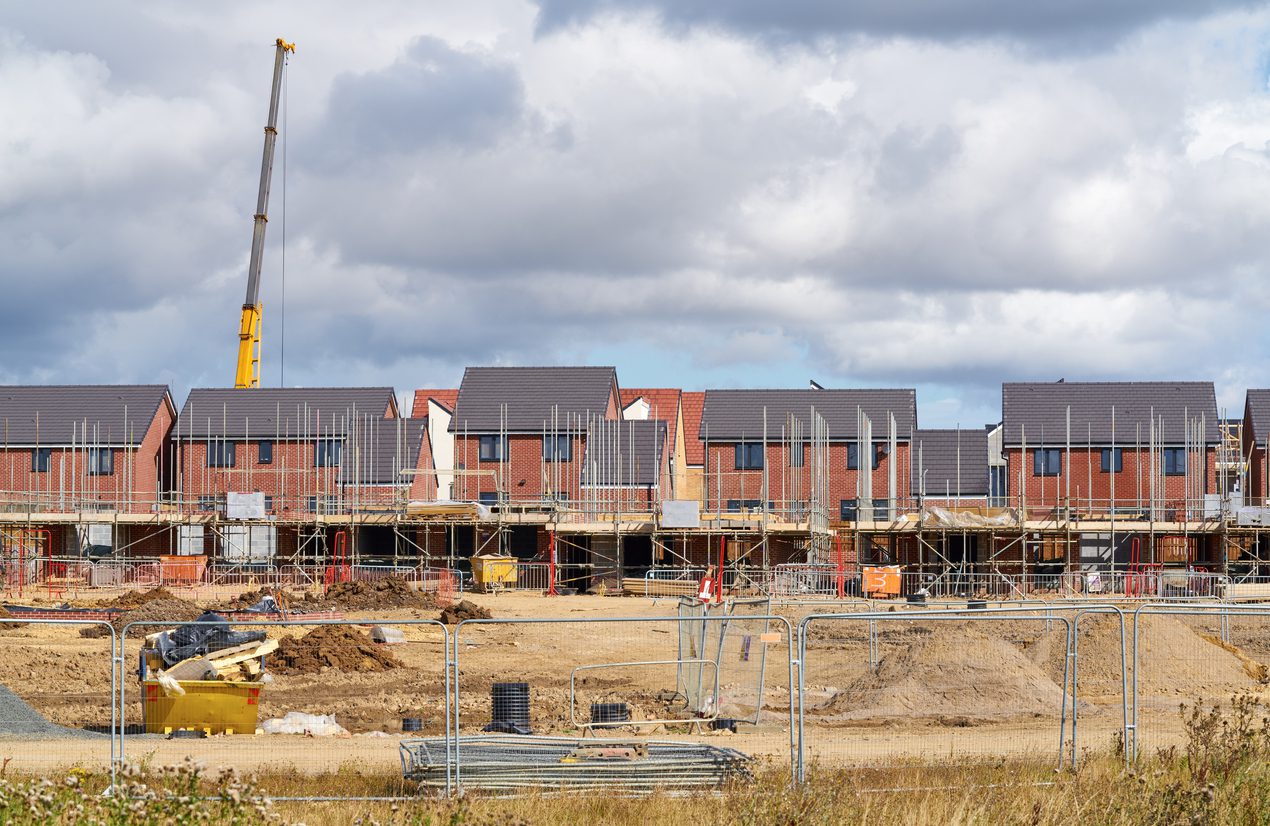UK: In her first Spring Statement as Chancellor, Rachel Reeves laid out Labour’s plan to tackle economic instability with a combination of spending cuts, investment pledges and planning reforms.
These moves are set to impact the real estate and housing sectors significantly, with housebuilding forecast to hit a 40-year high.
A new set of planning reforms is projected to inject £6.8 billion into the economy and support the construction of more than 1.3 million homes over the next five years.
Reeves also confirmed a £2 billion investment in 18,000 affordable and social homes as part of Labour’s wider pledge to build 1.5 million homes by the end of this parliamentary term.
The Office for Budget (OBR) forecasts that these reforms could push annual housebuilding to 305,000, marking the highest level in 40 years, and contribute £7 billion to GDP by 2030.
A revised national planning policy framework will underpin the acceleration, with Reeves emphasising the need to cut red tape and unlock stalled developments.
Besides housing, the spring statement also included a £14 billion package of welfare reforms, with cuts to health-related entitlements, increased Universal Credit standard allowance and a civil service headcount reduction of 10,000.
Alongside these measures, Reeves pledged an extra £2.2 billion in defence spending in response to what she described as “uncertain times.”
Reeves confirmed a 6.7 per cent rise in the National Living Wage from April 1, delivering a £1,400 pay bump for three million workers, a move likely to influence wage expectations across the construction and property services sectors.
Finally, the OBR halved the UK’s 2025 growth forecast from two per cent to one per cent, citing global instability and rising borrowing costs. In an attempt to claw back revenue, the government will invest in HMRC’s tax fraud unit, with a crackdown on avoidance expected to raise £1 billion.
Michael Cook, CEO of Leaders Romans Group (LRG) said: “Given the challenge of making £15 billion worth of cuts to public spending, today’s Spring Statement was never going to deliver everything on the property industry’s wishlist.
“That said, two significant pieces of good news stand out amongst some otherwise depressing statistics. And this goes to show the faith that the government has its our sector to deliver much-needed growth.”
“The first is the £2 bilion top-up for the Affordable Homes Programme which will provide up to 18,000 new social and affordable homes. However, it seems a missed opportunity that the government rarely addresses social housing in its broadest sense – homes for sale as well as for rent.
“At very little cost to the taxpayer, the government could do much more to champion shared ownership as an affordable and practical way of addressing this country’s housing crisis and enable first time buyers to get a foot on the housing ladder.”
Regarding the Renters’ Rights Bill, he said: “There’s much that needs to be changed in the Renters’ Rights Bill before it is enacted – not least the courts process, the increase in allowable arrears and the abolition of rent in advance. It’s not a fiscal consideration but it will impact considerable on costs to the government. So in the context of toady’s spending review we call on the government to consider the financial damage that the Renters’ Rights Bill will cause unless substantially amended – a potential increase in homelessness and the resultant cost to the public purse – and look at making amendments to the Bill during its final stages.
Andy Jones, group director of corporate sales, lettings & BTR at LRG said: “The positive news for the property sector in relation to today’s announcement is that the government remains confident that our sector, perhaps more so than any other, has the potential to deliver true economic growth, and in doing so, turn around the country’s economic prospects. Announcements such as the delay in implementing the Building Safety Levy, the additional funding for the Affordable Homes Programme and for construction training are testament to that. But there’s much more that needs to be done.”
“Attending industry events recently, I have been shocked by a lack of awareness of BTR among politicians. And yet BTR is growing at an unprecedented rate: the British Property Federation recently reported a 23 per cent growth in completed BTR units over the past year alone.
Against the backdrop of the Renters’ Rights Bill and greater regulation for the private rented sector, the BTR sector is emerging as a key solution to the supply-and-demand crisis in the rental sector. At little cost to the public purse, the government could help further increase the much-needed supply of BTR homes by creating BTR-specific policies, both at a national level (BTR is mentioned just once, briefly, in the current NPPF) and in local plans (which, in failing to include BTR-specific policies, contribute to the lack of awareness and potential misunderstanding of the benefits of BTR).”
Jonathan Handford, managing director at national estate agent group Fine and Country said: “For too long, an outdated and restrictive planning system has held back housebuilding, creating a chronic undersupply of homes, particularly in high-demand areas. These reforms will help unlock land, cut red tape, and support responsible development, ensuring more high-quality homes are built where they are needed most.
“More homes mean more options for buyers, easing affordability pressures and making homeownership a more realistic goal for many. Alongside planning reform, the government should consider further support, such as a modernised Help to Buy scheme and targeted Stamp Duty reductions. A planning system that prioritises responsible development — combined with policies that support first-time buyers — will unlock opportunities, increase affordability, and create a stronger, more accessible property market for all.”
Daniel McAfee, head of legal operations at Lawhive said: “The government’s £2 billion funding announcement for up to 18,000 new homes represents a significant development for individuals and families across England. While this initiative offers hope for some of the 1.33 million households currently on social housing waiting lists, it also creates new pathways for people to navigate as they seek stable, affordable housing.”
“For those seeking access to these new social homes, the allocation process will require navigating unfamiliar application systems and eligibility criteria. Many people find themselves questioning how their individual circumstances affect their chances of securing housing.
“This uncertainty often leads to seeking legal guidance to understand their statutory rights and challenge allocation decisions through formal appeals processes. Having access to housing law expertise becomes crucial when navigating local authority waitlist policies or addressing potential discrimination in the allocation system.”
























